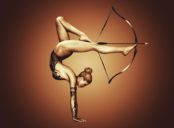Paralympics curling: A Comprehensive Overview

Introduction:
Paralympics curling is a fascinating sport that combines skill, strategy, and teamwork. In this article, we will provide a thorough overview of the sport, discussing its various types, popularity, and unique aspects. Additionally, we will delve into the quantitative measurements of Paralympics curling, comparing it with other sports in terms of participation and viewership. Finally, we will explore the differences between different types of Paralympics curling and take a historical look at the advantages and disadvantages associated with each type.
1. Understanding Paralympics Curling:

Paralympics curling is a sport played on ice, where teams of athletes with disabilities compete against each other. The objective is to slide a stone towards a target, known as the ”house,” while teammates sweep the ice to control the stone’s speed and direction. Athletes can use specialized equipment to assist their delivery of the stone, enabling individuals with various disabilities to participate fully.
2. Types of Paralympics Curling:
There are several types of Paralympics curling that cater to athletes with different disabilities:
a) Wheelchair Curling: This form of curling is played by athletes who use wheelchairs for mobility. Players use a push stick to deliver the stone, and sweeping is typically done by teammates or with the use of a specialized broom attached to the wheelchair.
b) Visually Impaired Curling: Designed for athletes with visual impairments, this variant of the sport involves the use of an audible target or guide to assist players in sliding the stone accurately. Teammates provide verbal cues to help the visually impaired athlete adjust the stone’s trajectory.
c) Standing or Amputee Curling: This type of curling allows athletes with lower or upper limb impairments to participate without the use of a wheelchair. Delivered stones may require assistive devices or modified techniques to accommodate the athlete’s specific needs.
3. Quantitative Measurements of Paralympics Curling:
Paralympics curling has gained widespread recognition and popularity in recent years. According to statistics, the number of participating countries in Paralympics curling has increased significantly, reflecting the sport’s growing appeal worldwide. Additionally, television viewership and online streaming of Paralympics curling events have witnessed a surge, showcasing the sport’s ability to captivate audiences globally.
4. Differences in Paralympics Curling:
Although Paralympics curling shares similarities with its able-bodied counterpart, several notable differences distinguish the two. Firstly, equipment modifications and accessibility considerations make Paralympics curling more inclusive for athletes with disabilities. Secondly, the rules and regulations may vary slightly to accommodate the unique needs of different disability categories. Lastly, the techniques employed by athletes in delivering the stones and sweeping may differ based on the type of disability, further highlighting the sport’s adaptability.
5. Historical Analysis of Advantages and Disadvantages:
Over time, Paralympics curling has evolved in terms of accessibility, equipment advancements, and inclusivity. Historically, one advantage of Paralympics curling has been its ability to foster social integration and provide a platform for athletes with disabilities to showcase their skills. However, various challenges, such as funding constraints and limited opportunities outside major events, have posed disadvantages for the sport’s development. Efforts to address these drawbacks have led to innovations and advancements aimed at making Paralympics curling more accessible and sustainable.
Conclusion:
Paralympics curling is a captivating sport that celebrates the talent, determination, and teamwork of athletes with disabilities. With its various types and increasing popularity, Paralympics curling has established itself as a standout event in the Paralympic Games. The sport’s ongoing evolution, coupled with its unique inclusivity and competitive spirit, promises a bright future and continued growth in the world of adaptive sports.





















